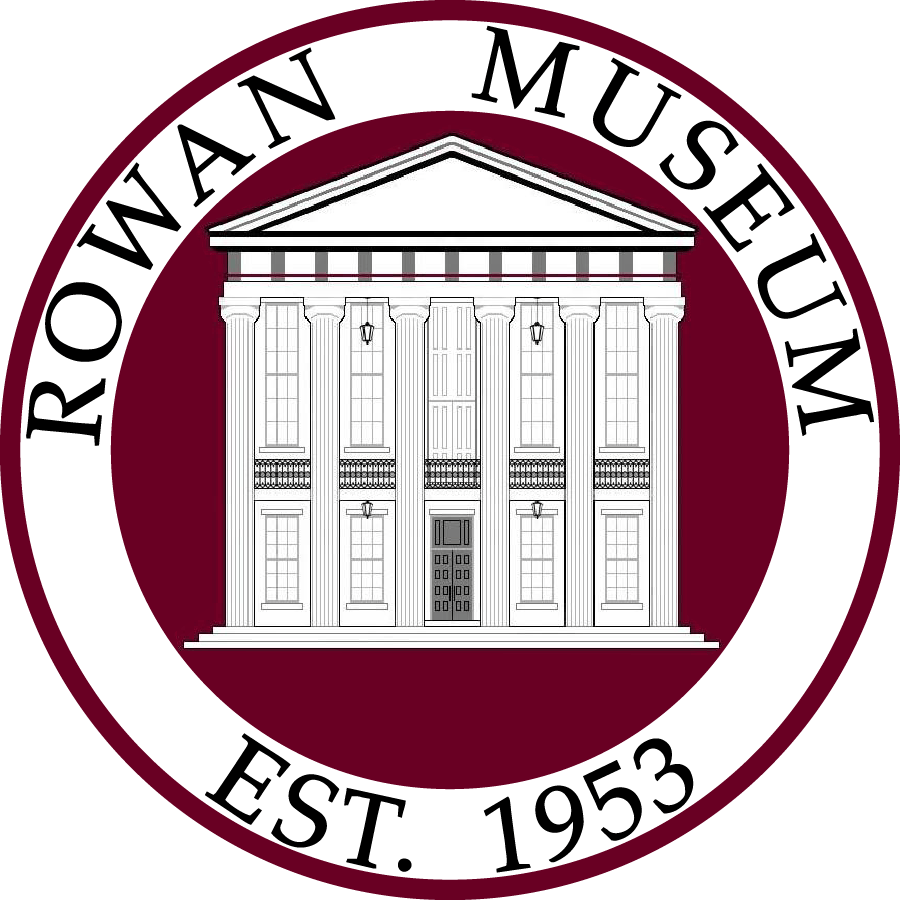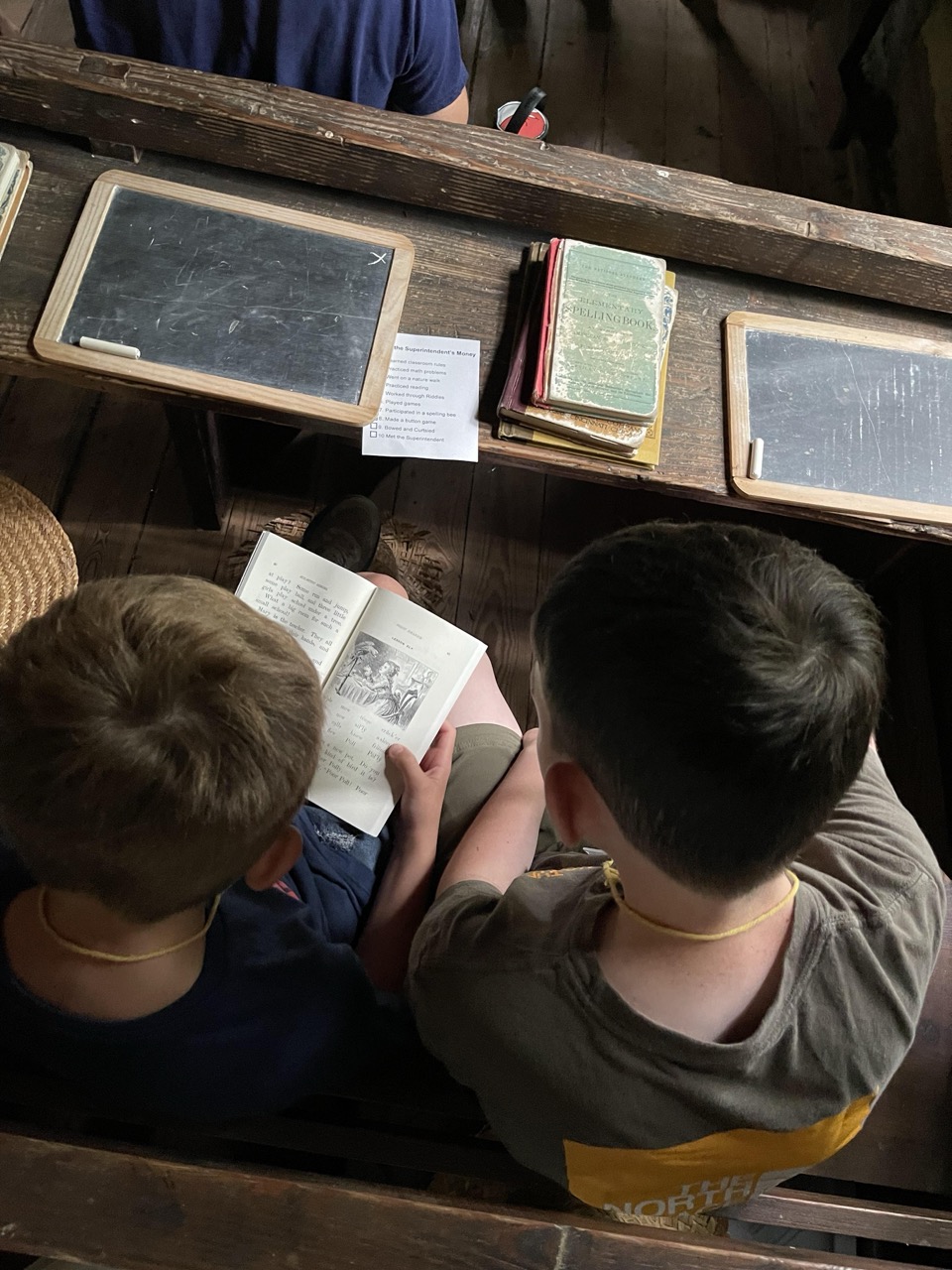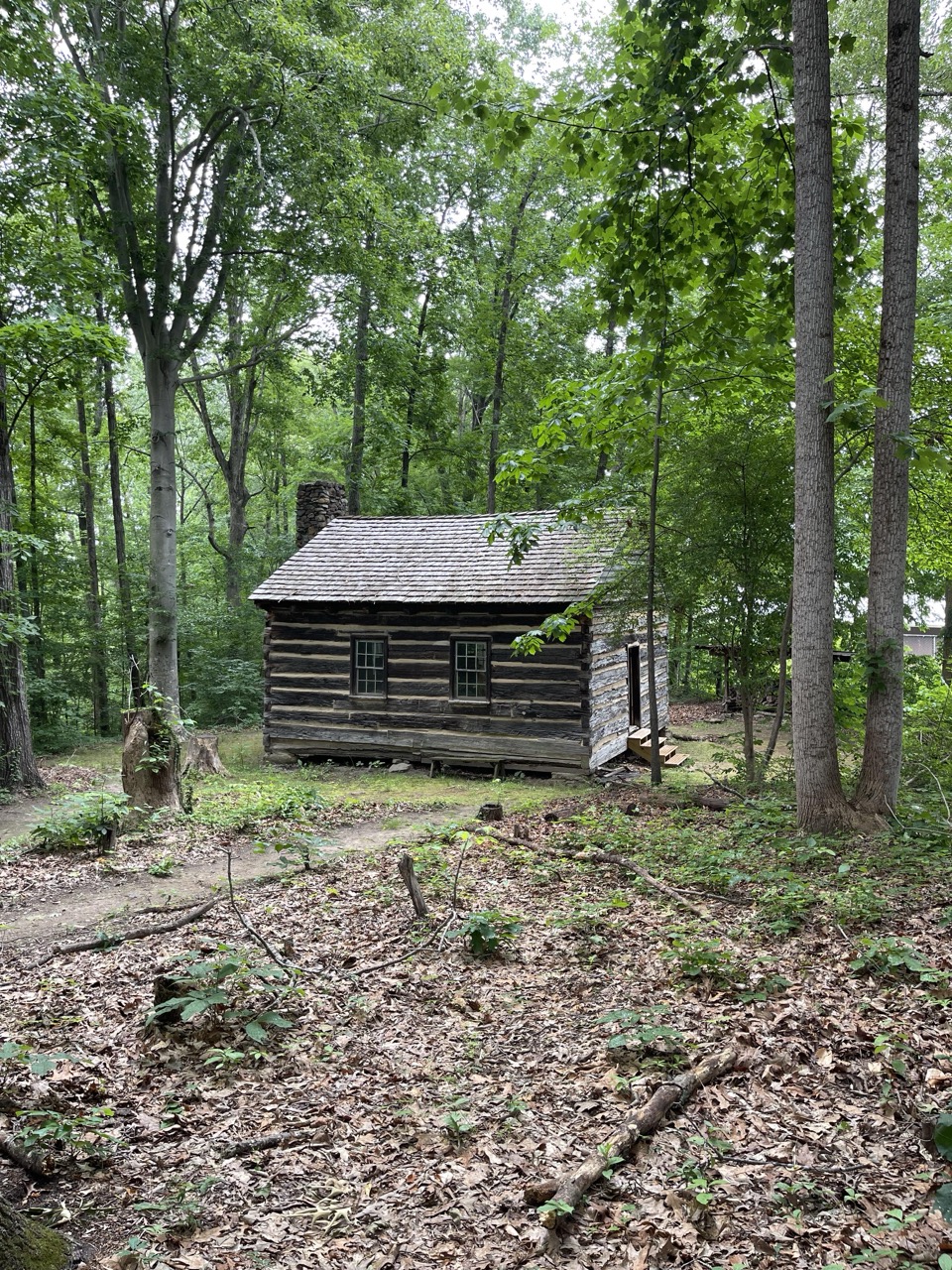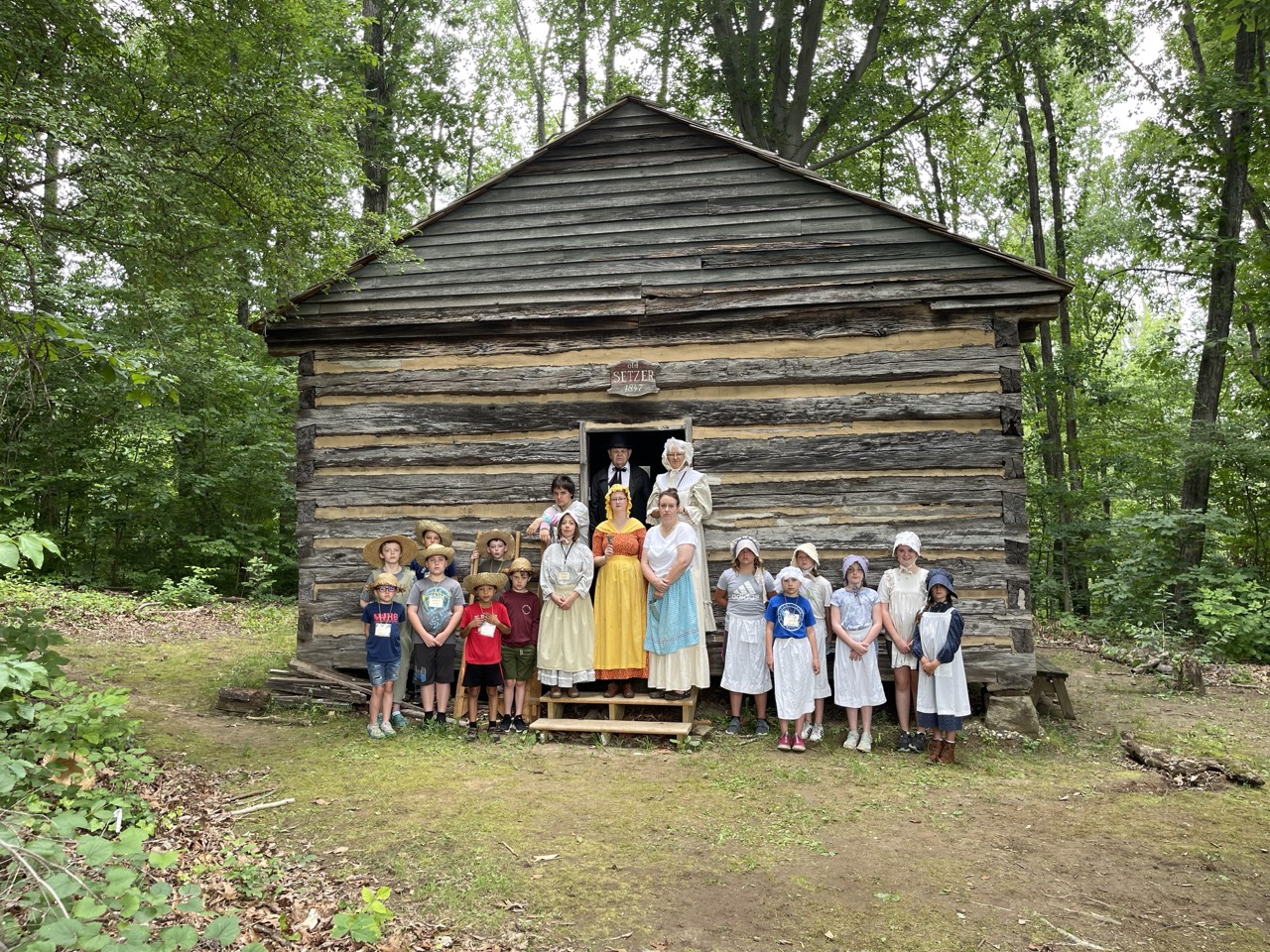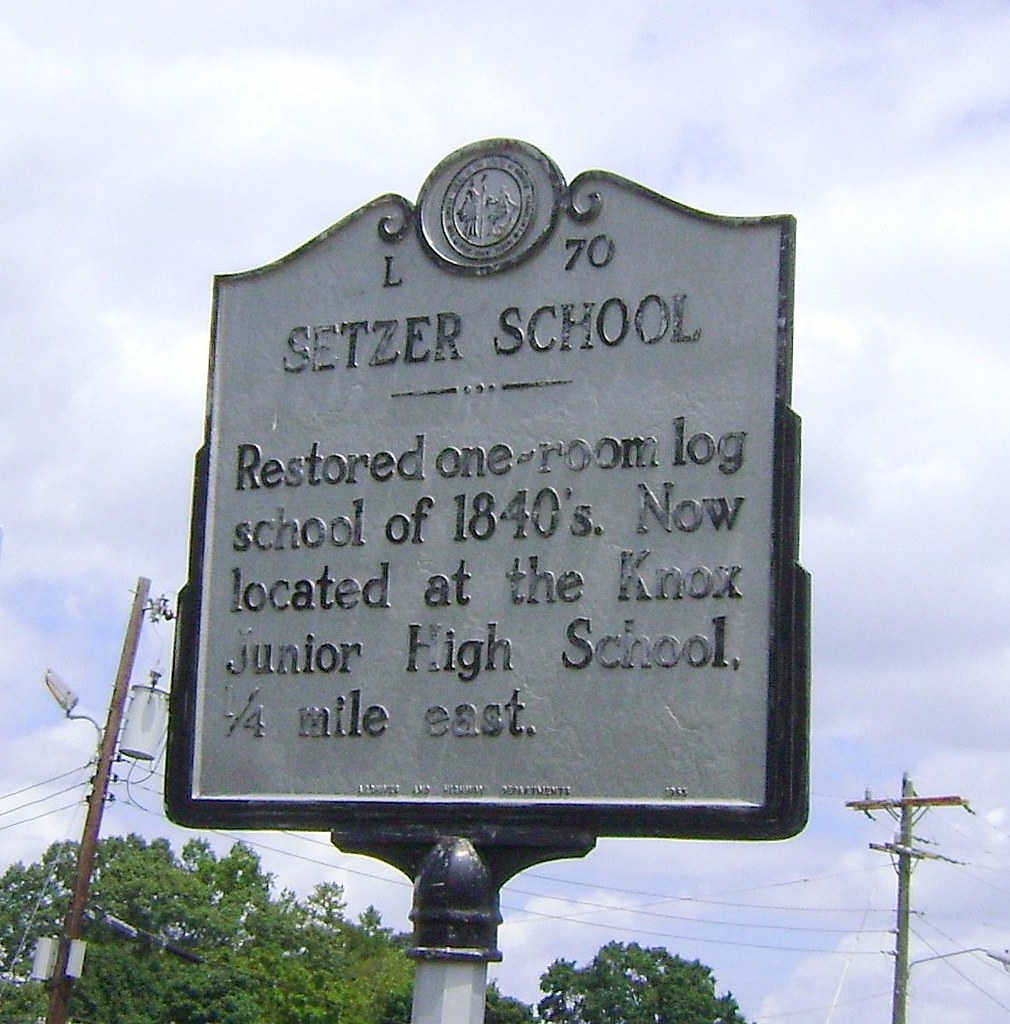Plan your visit
From I-85 take Exit 76 (NC Highway 52 South Salisbury). Head towards Salisbury Downtown on Innes Street several miles to Mahaley Ave. Turn right and Knox Junior High School is 1/4 mile on the left.
Pictured: The school as it stands today. Photo by Rowan Museum.
The Setzer School in Rowan County offers a window into public school history in North Carolina.
The one-room log structure was one of the early common schools that grew out of state public school legislation after 1839.
Pictures: Historical Marker photo by Keith Hall
What became known as the Setzer School was in District No. 22 (the Setzer School District), two miles east of China Grove. John Eagle, Jacob Setzer, and W. C. Miller were elected school committeemen at a meeting at Setzer’s house in 1847. The school building measured approximately 24 by 21 feet, and was constructed with dovetailed oak logs. It stood on the property of the Probst family, but acquired its name from the Setzer family, whose members lived on the adjoining tract. The Setzers held a strong interest in schools and education. Both families (of German descent) had been in the area since the mid-1700s.
In the 1840s, students at Setzer studied spelling, reading, writing, and arithmetic. By 1852, grammar and geography had been added to the curriculum. Composition, declamation, and algebra were added much later. The school served a small district that sometimes included more than 100 school-age children (usually less than half of whom attended classes). By the late 1850s, however, North Carolina’s common school system was among the best in the nation. A number-grading system of “1 to 5” was used to mark the progress of students, with “1” showing the highest merit and “5” the lowest. In the 1850s, the teachers themselves were graded by examining committees. Students of all ages attended class and received progress reports based on their respective levels of achievement. The school opened its doors for only a few months each year.
Before the Civil War, the teachers’ salaries were roughly twenty dollars per month. Men made slightly more than women. The school operated only sporadically during the Civil War and Reconstruction eras and closed its doors permanently in 1892 after over fifty years of service. In 1961, the old schoolhouse was purchased from Brown Probst and his mother, Mrs. Willie B. Probst and was moved approximately eleven miles to the grounds of Knox Junior High School. Restoration efforts were also begun that year.
Today, the building stands on the property of Horizons Unlimited, but programming and tours are managed by the Rowan Museum. We offer immersive experiences into the public schools of the 19th century.
